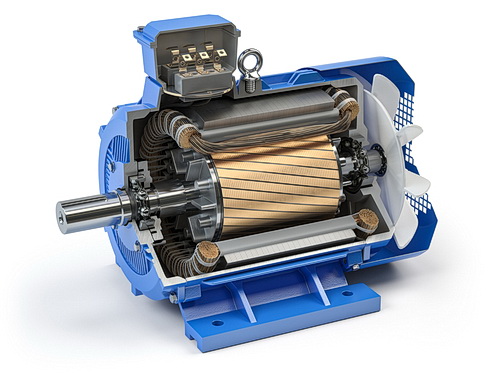Overview

When an electric current runs through a wire, a magnetic field is produced and when there is a magnetic field, metallic elements become attracted to it. This is the concept behind the workings of an electric motor.
If we can maintain these elements to move towards the magnetic field and away from it at an ongoing, continuous rate, we can have a device that is constantly spinning.
If we attach something to the part of the device that is constantly spinning, such as a glass plate in the microwave, we have harnessed the power of converting electrical energy into mechanical energy, or more specifically, we have created an electric motor.
What Devices Use Electric Motors?
When you use an electric razor, toothbrush, fan, or vacuum cleaner, you are using an electric motor. Let’s through the inner workings of your car also. That’s probably no surprise, but how about this: washing machines, refrigerators, microwaves, your computer, and even your smartphone!
Confused? Don’t be. Something is needed to operate the refrigerator’s compressor. If there is a mechanical hard drive in your computer, then there is a small motor that turns the disk. And microwaves? Well, something must be spinning that glass plate around, right?
And your electric cars (if you have one). They have motors, which are used to spin the tires as you drive, among other things.
The bottom line is you probably go about your day using some device that uses an electric motor. So now that we know how our lifestyles are affected by these devices, let’s delve into how these motors work.
The Working of an Electric Motor
First, let us focus on the magnetic field that causes the components within the motor to constantly spin.
How is the magnetic field created? Our article on magnetic fields explains this, but in a nutshell, if we connect a wire to a battery, the electrons of each of the atoms will move toward the positive pole of the battery. If we wrap the wire around a metal rod, the magnetic field intensifies.

The Initial Stage
The motor is designed so that the magnetic poles of a rod, called a rotor are always facing the same polarity of a stationary magnet, called a stator, causing the rotor to spin around.
For example, when electricity is turned on, the polarity of one side of the rotor, let’s say the north side is initially facing the north side of the stator, so there will be that repelling effect, causing the rotor to spin in the other direction.
The Next Stage
Well, that initial stage works just as it should because like poles repel each other, but that’s it. Then it stops, so for the rotor to keep spinning, there has to be a mechanism that will cause the poles to reverse continuously.
That is the job of the commutator. This entity keeps reversing the path of the electrons so that the poles are always repelling one another and consequently, keeps the rotor spinning.
Key Parts of an Electric Motor
Let’s review the parts of the motor:
-
- Stator – The stationary part of the motor that creates the magnetic field that causes the rotor to spin. The stator is found in between two pieces of copper that conduct electricity.
- Rotor – The rotating part of the motor that is placed within the magnetic field.
- Shaft – The shaft of the motor connects the rotor to the stator and is used to power the equipment or machinery.
- Commutator – The device that reverses the polarity of the rotor. Like reversing a battery at every spin so that the electrons change course.
- Fan – The fan is used to create air flow and increase the efficiency of a motor.
Final Words
Electric motors are all around us. They are a safe, efficient, and reliable way to power machinery and equipment. They are available in a range of sizes, voltages, and designs and can be powered by a wide range of energy sources, including fossil fuels and renewable energy sources like solar or wind.
